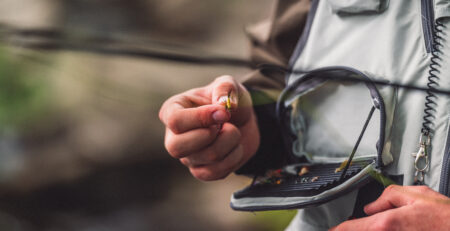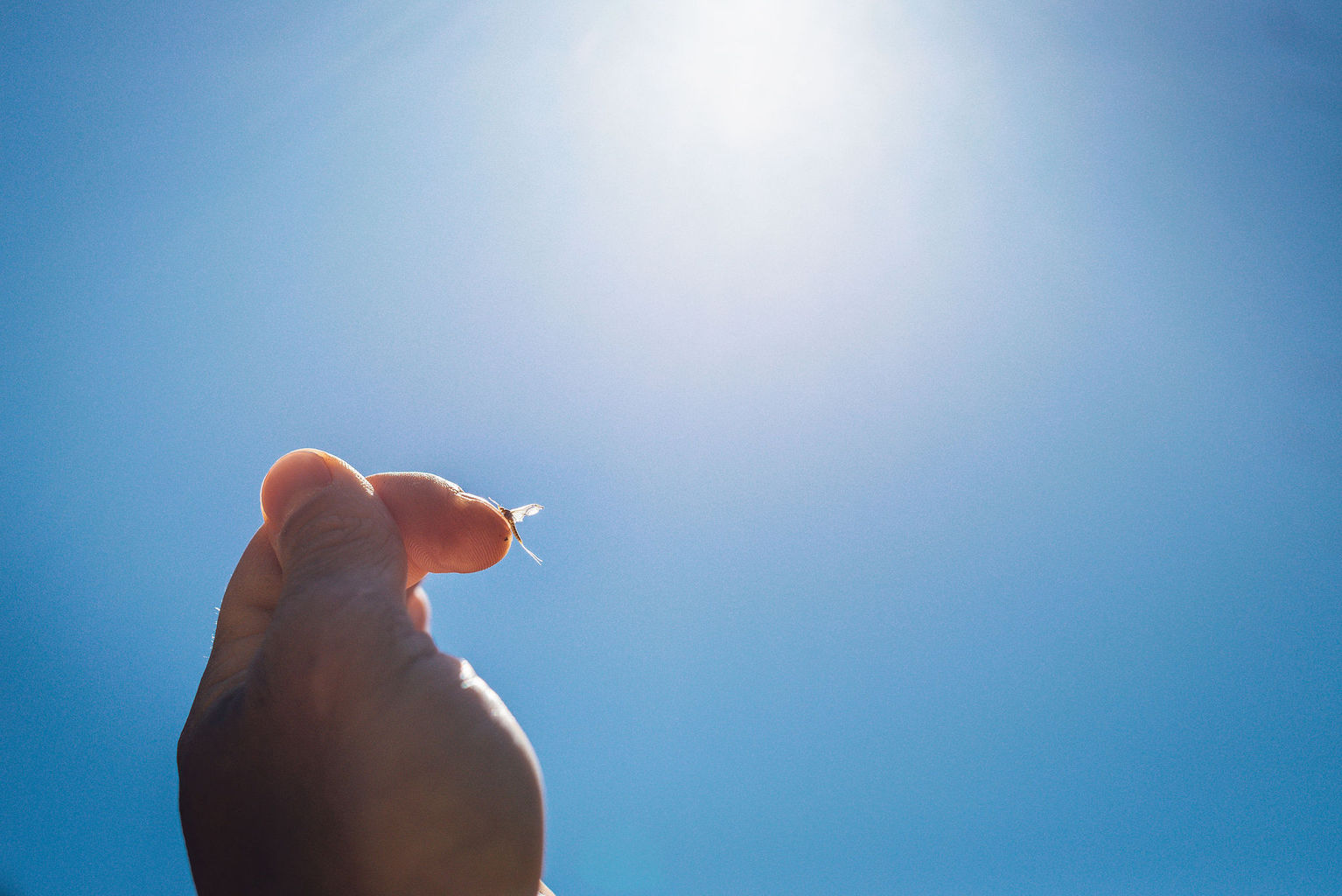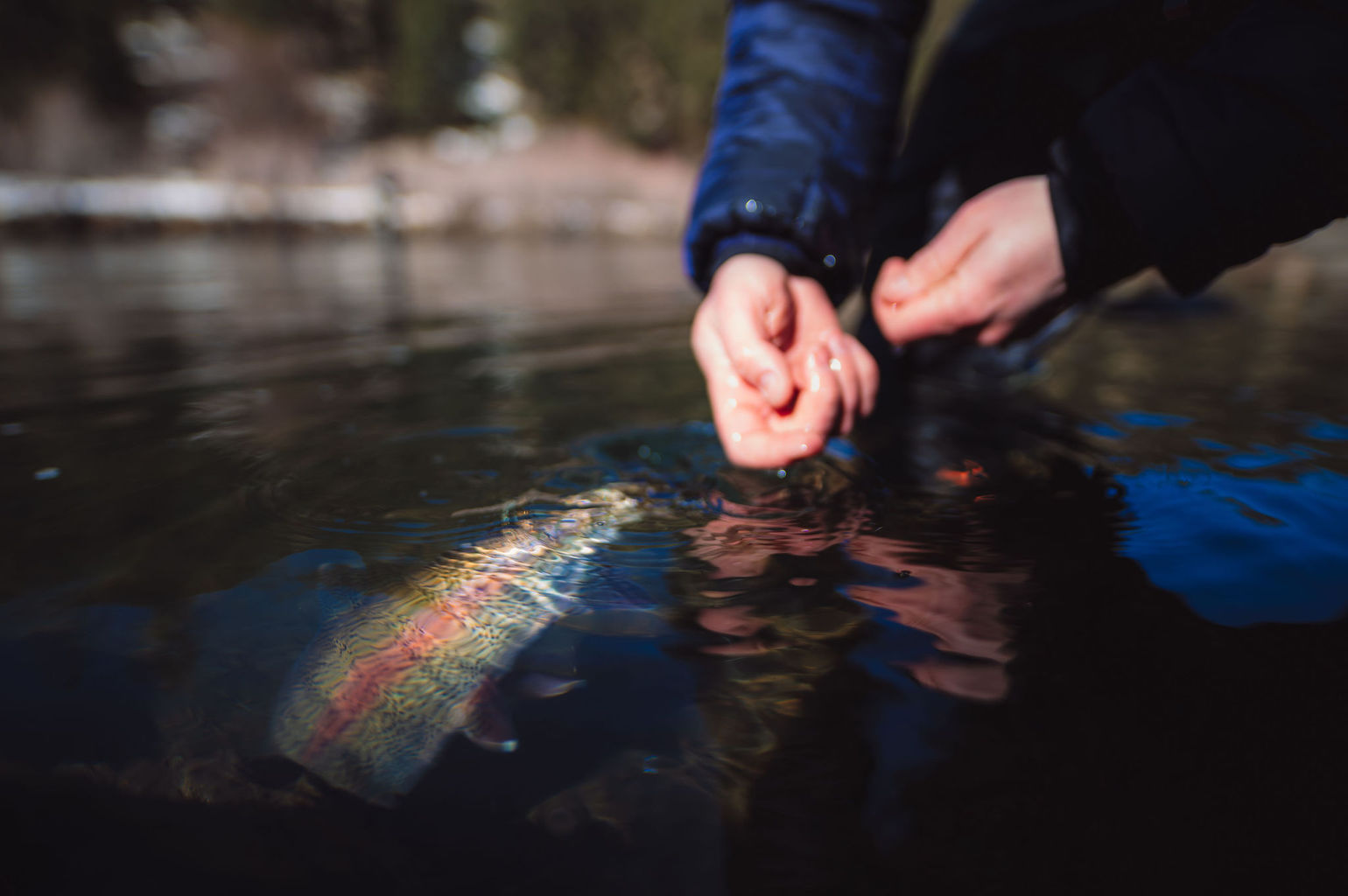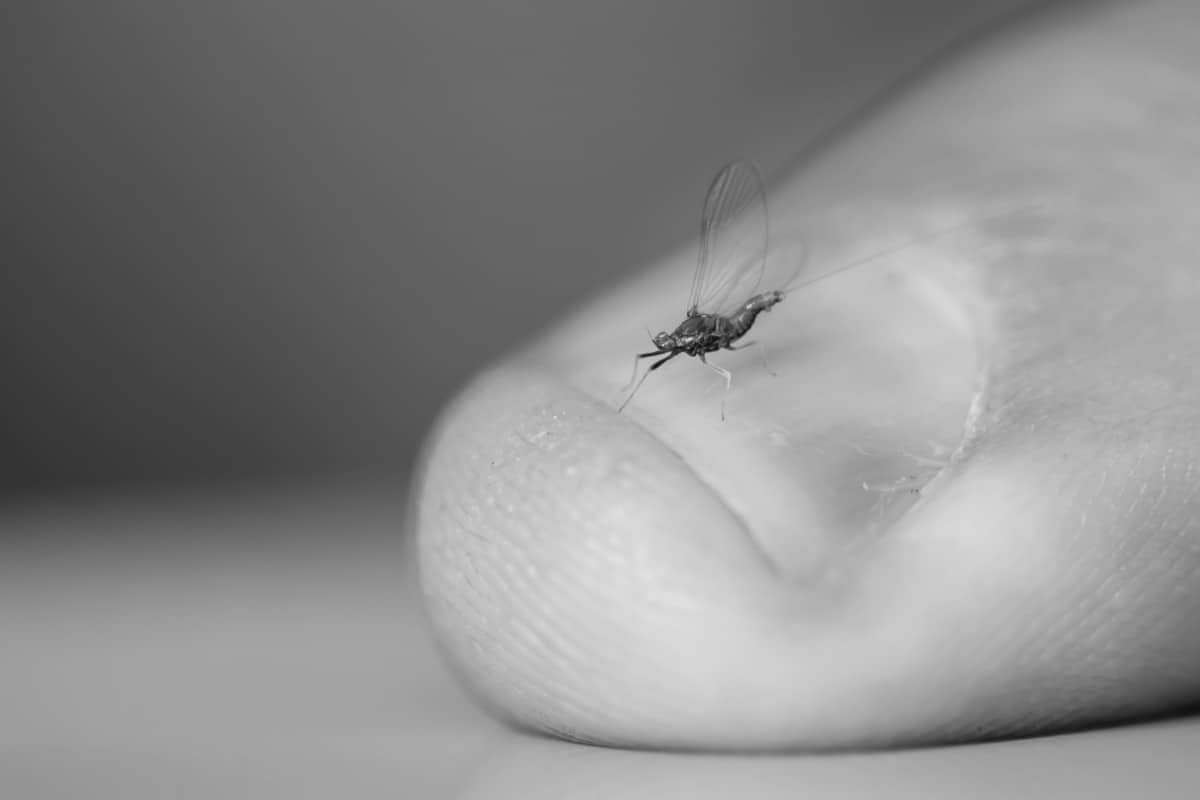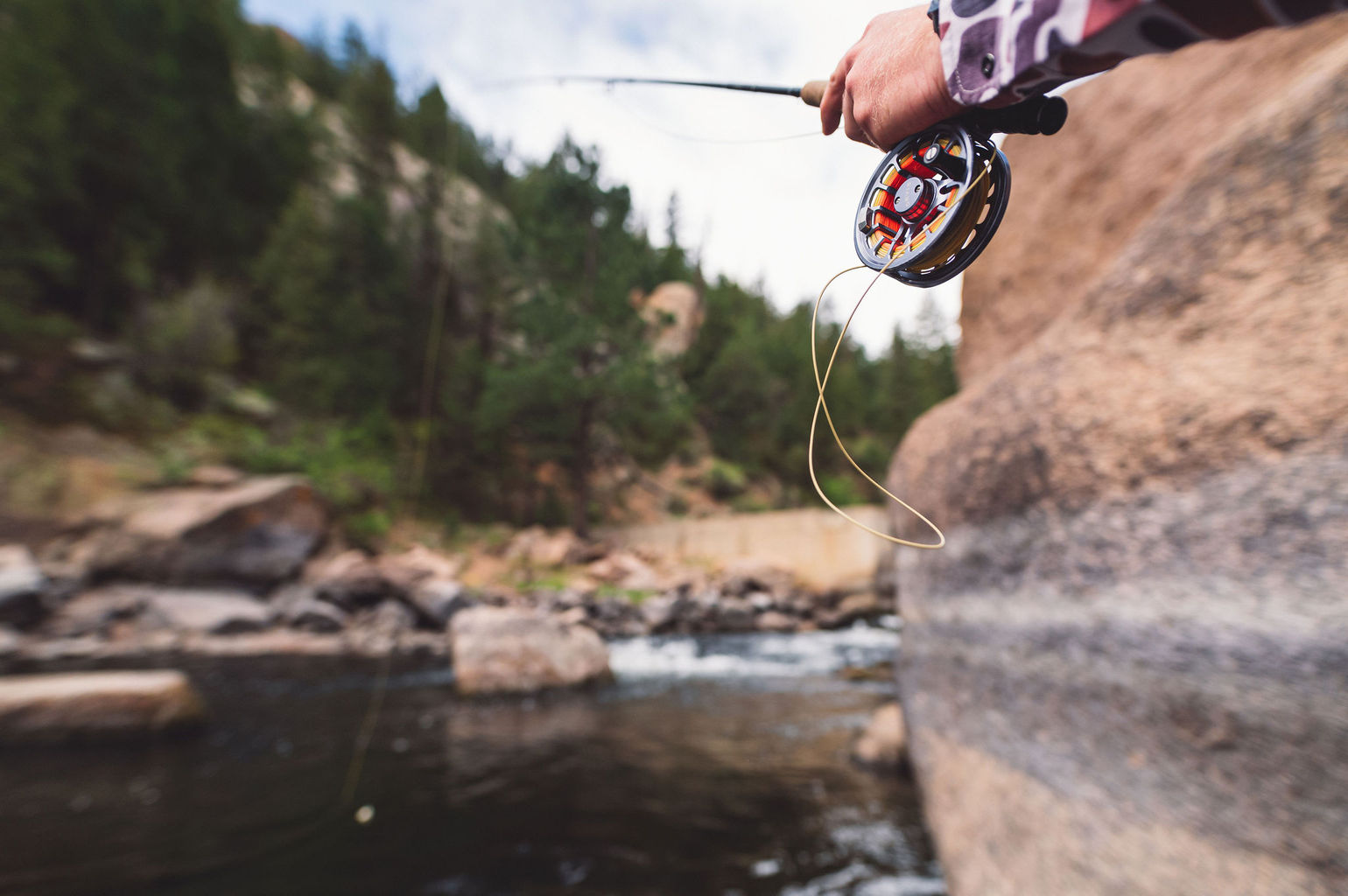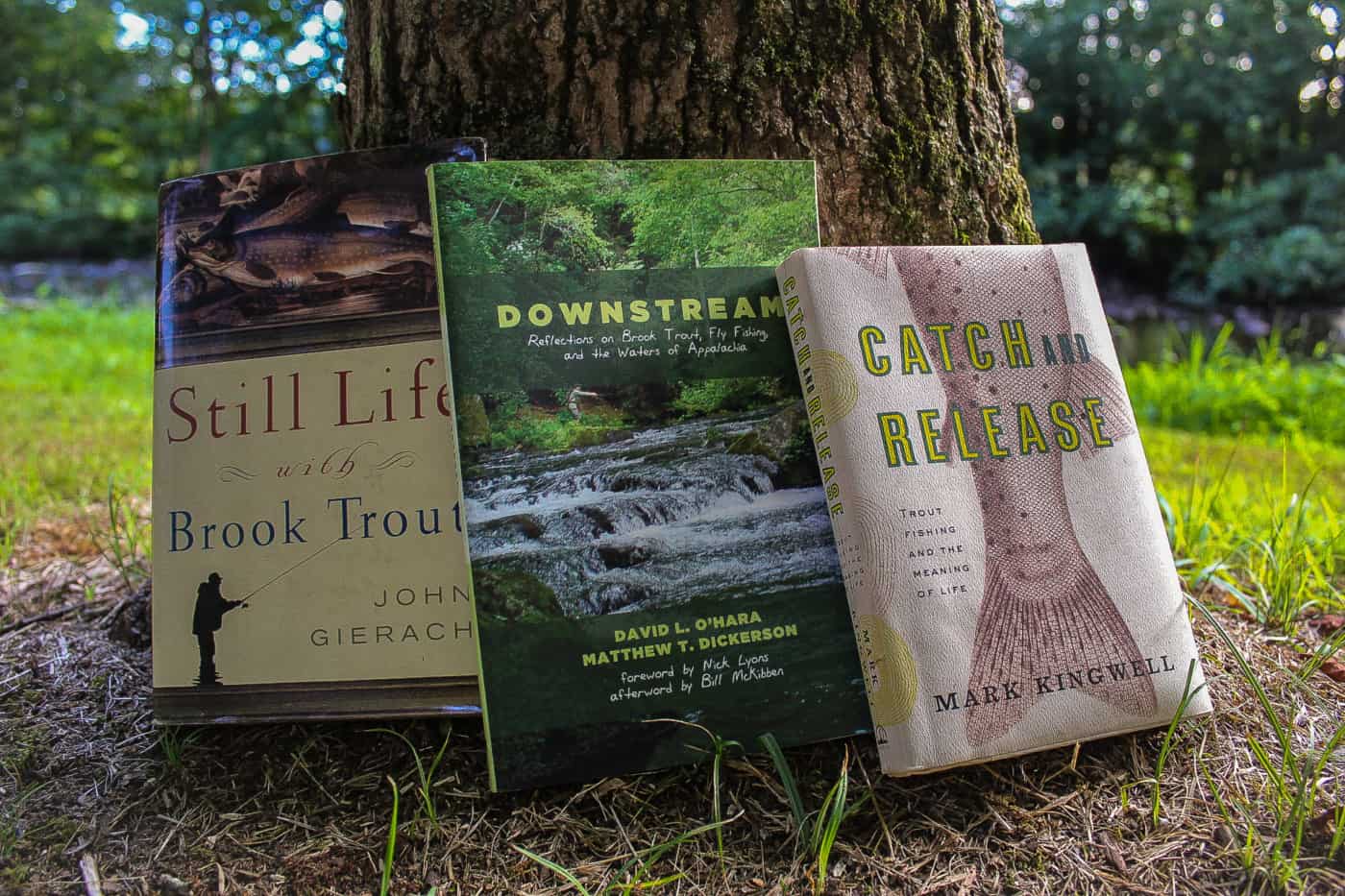Essential Tactics And Tips For Small Stream Trout
It’s hard to not fall in love with small stream fishing while scrolling through Instagram and marveling over stunning brook trout.
The idea of bow and arrow casting underneath thick mountain laurel and watching gorgeous trout feed so innocently in plunge pools sounds awful nice, but it can also be downright frustrating. Fly fishing in such tight quarters can result in bird’s nests, broken rods, claustrophobia, and a day filled with nothing but spooked fish. Here are a few tips that will help turn your next small stream adventure into the stuff of dreams rather than nightmares.
Finding Trout
Trout live in a wide variety of places, and that can change depending on a number of factors. Water temperature, food sources, currents, and predators are just a few of the things that dictate where trout hold. On a small stream, options for hiding places are more limited.
This can take a great deal of pressure off anglers because there is rarely a question of whether or not a trout might be hiding under that overhang or in that enticing plunge pool. On a given small stream day upwards of 75% of the water might not harbor any fish at all. It’s easy to pinpoint because riffles will be less than ankle deep and easy to tell that no fish are present. While trout numbers (in a generic fish/mile sense) often aren’t as strong as a tailwater, it’s easier to tell where trout are hiding.
On a typical small stream, especially in the Appalachians, look for depth.
Water depth provides food, cover, and a break from strong currents. Undercut banks, submerged logs, and plunge pools are all favorite spots to toss a fly in. It’s not to say that trout won’t ever be in other locations, but the likeliest of spots will hold the majority of fish in small streams.
Fly Fishing Made Easy 👍
Our Quarterly Fly Club ships 1,000’s of flies to anglers all across the United States. Receive curated fly assortments selected for the season with in-depth articles on how to fish them. Great for beginners to learn and for intermediates to discover new flies.
Opportunistic Trout
Probably the greatest aspect of small stream fishing (aside from the gorgeous fish and scenery, of course) is how opportunistic these trout usually are. A given drift might spend two or three seconds inside the fish feeding window and that’s maybe pushing it. Trout in these locations have to make an instant decision whether or not they are going to eat whatever food, or fly, is floating past.
The nature of that split-second decision makes it much easier on the angler. This type of fishing is far removed from educated pressured trout that require our flies to be size #26 instead of #24. Poor casts can be forgiven as small stream trout cannot afford to let a would-be meal drift idly by on account of their reservations.
Flies To Use
In a similar fashion, trout are often anything but picky when it comes to fly selection. Now, there should be some thought and care given to fly choice, but trout often forgive incorrect matching of the hatches. When compared to larger freestone streams or tailwaters, far fewer fly patterns are required. Simply attractors will often do the trick, and many a successful small stream angler carries nothing except stimulators, adams, and prince nymphs. Flies that resemble food and are drifted remotely naturally will yield strikes.
Some favorite small stream patterns:
-
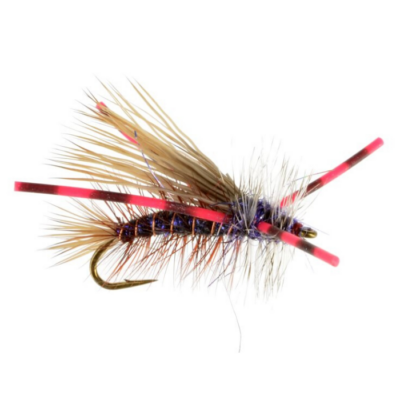 Rubber Legged Stimulator$2.29
Rubber Legged Stimulator$2.29 -
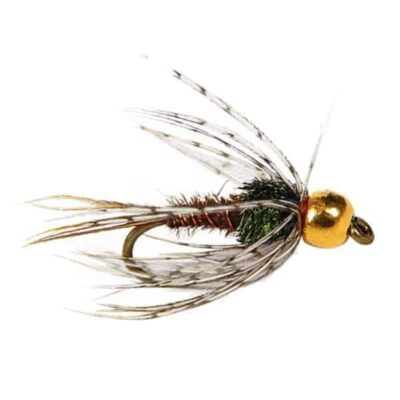 Gray Pheasant Tail$2.05
Gray Pheasant Tail$2.05 -
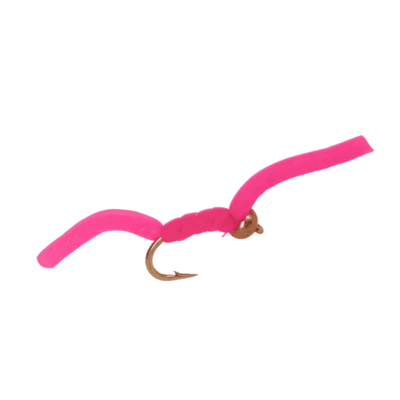 Squirmy Wormy Fly$1.50
Squirmy Wormy Fly$1.50 -
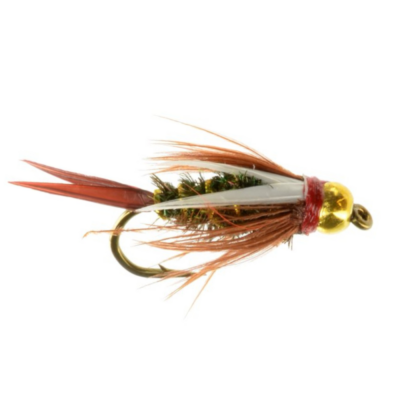 BH Prince Nymph$1.90
BH Prince Nymph$1.90 -
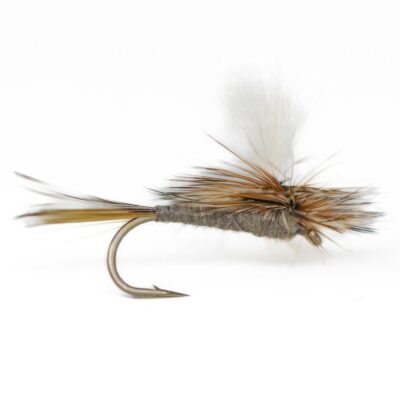 Adams Parachute$1.69
Adams Parachute$1.69
Approaching Fish
While fly selection can take a back seat thanks to opportunist trout, approaching likely looking spots requires the utmost of patience and thought.
Trout in small streams are under constant threat from predators, whether they come in the form of raccoons, birds of prey, or humans. These fish are always on high alert and have an amazing knack of vanishing into thin air. Getting into a position to make a successful cast can result in more spooked fish than caught fish unless we are careful.
Staying calm when a nice native brookie is steadily rising is much easier said than done. We have all been guilty of buggering up great water, and the potential to do that is magnified on small streams. It’s best to identify promising spots from far downstream, then plan an approach accordingly.
Decide which side of the stream you want to be on, where you want your fly to land, how the drift should go, and how you might play a hooked fish. By breaking down the entire situation an angler can then determine how to successfully get into position and make it all happen!
Small stream fishing can be rewarding and addicting. The landscape of these waters can be both rugged and beautiful, with perfectly mirrors the fish found here. Follow some of these tips to ensure that expeditions into these gems end in joyous Instagram posts and not frustration and heartache.





